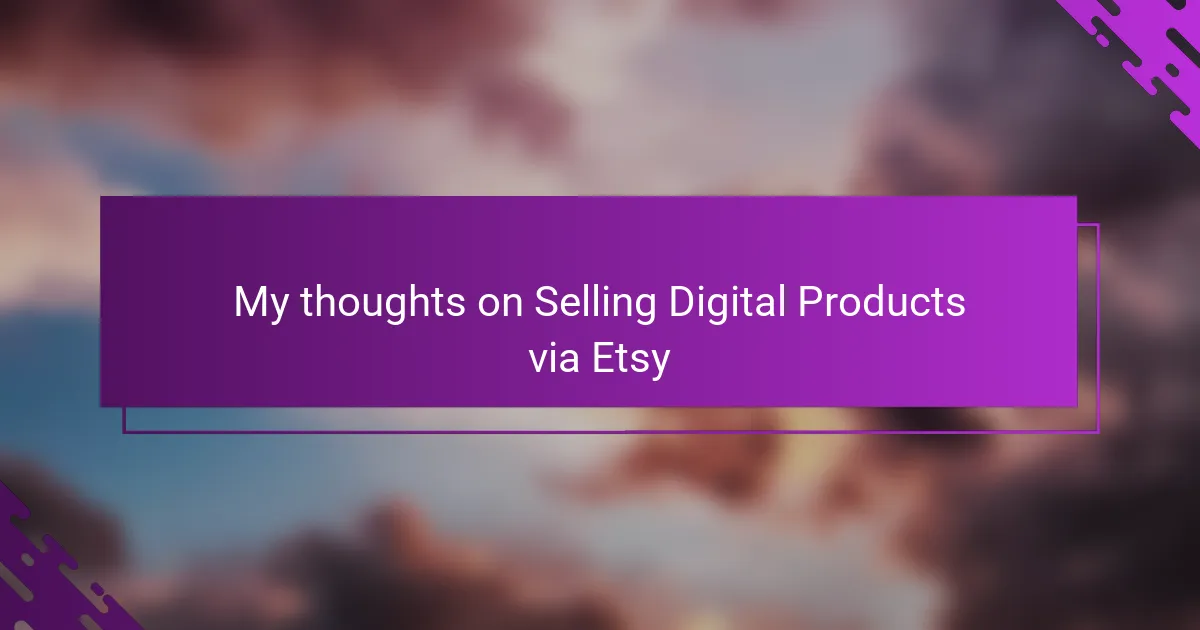Key takeaways
- Digital products allow for repeated sales without inventory, enabling creators to monetize their creativity effectively.
- Etsy offers a supportive community and user-friendly platform for showcasing and selling unique, handcrafted digital goods.
- Clear product descriptions, responsive customer service, and realistic expectations enhance customer trust and satisfaction.
- Learning from customer feedback and mistakes fosters improvement and cultivates lasting relationships with buyers.
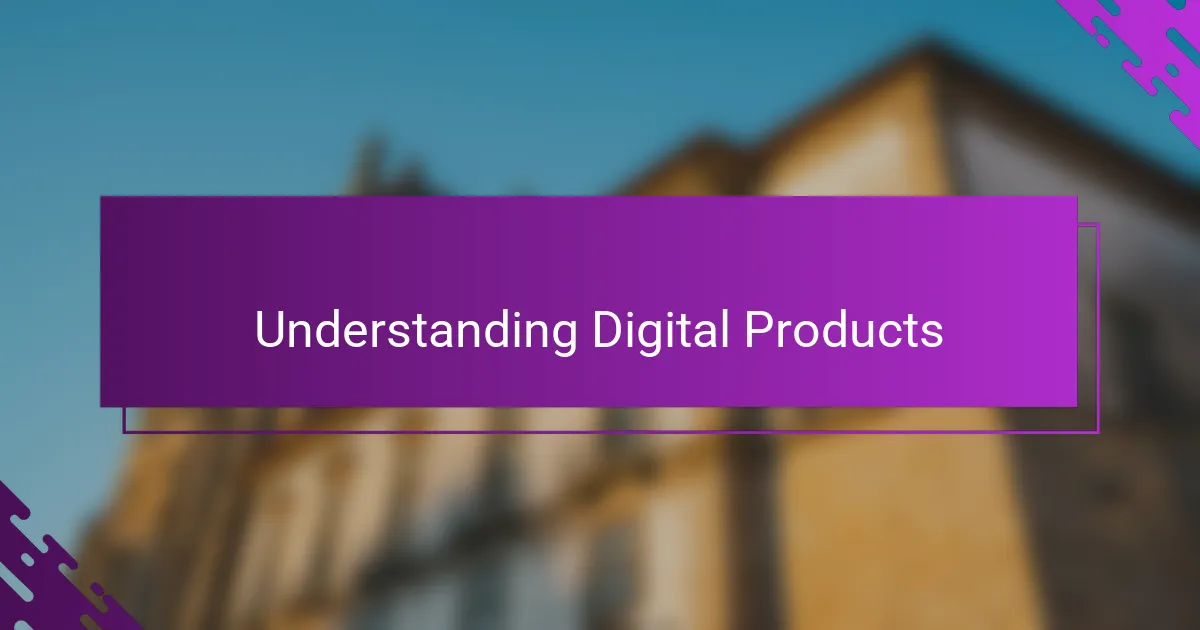
Understanding Digital Products
Digital products are essentially intangible goods delivered electronically, such as printable planners, digital art, or e-books. When I first started selling these on Etsy, I was amazed at how something created once could be sold repeatedly without any inventory hassles. Have you ever thought about how freeing it feels to turn your creativity into endless possibilities that customers can download instantly?
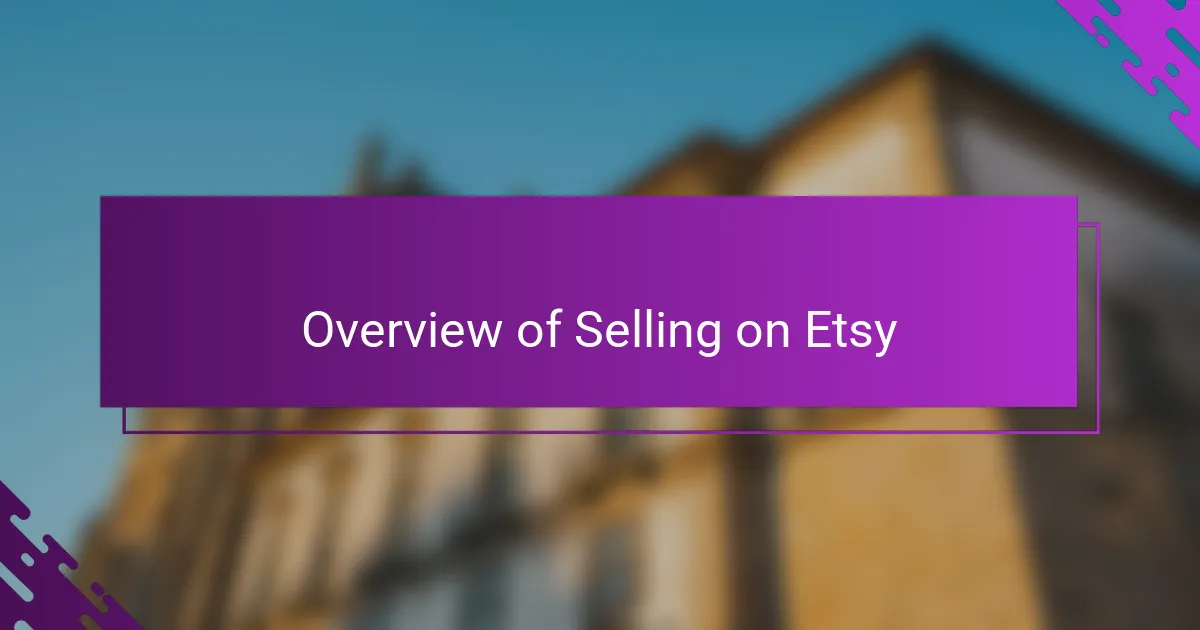
Overview of Selling on Etsy
Etsy has always struck me as a vibrant marketplace where creativity meets entrepreneurship. When I began selling digital products there, I quickly realized how user-friendly the platform is, even for someone like me who isn’t a tech expert. Have you ever stumbled upon a shop that feels both professional and personal at the same time? That’s the unique blend Etsy offers.
One thing I appreciate about Etsy is its built-in audience hungry for unique, handcrafted, or niche digital goods. I’ve noticed that buyers come with a mindset ready to support independent creators, which has made each sale feel more meaningful. Isn’t it encouraging to know that your work reaches people who truly value originality?
Managing my shop has been surprisingly straightforward, from listing new items to handling transactions and downloads. Of course, there are little learning curves, but I found the support and community forums on Etsy to be incredibly helpful. It’s almost like having a team cheering you on as you grow your digital business.
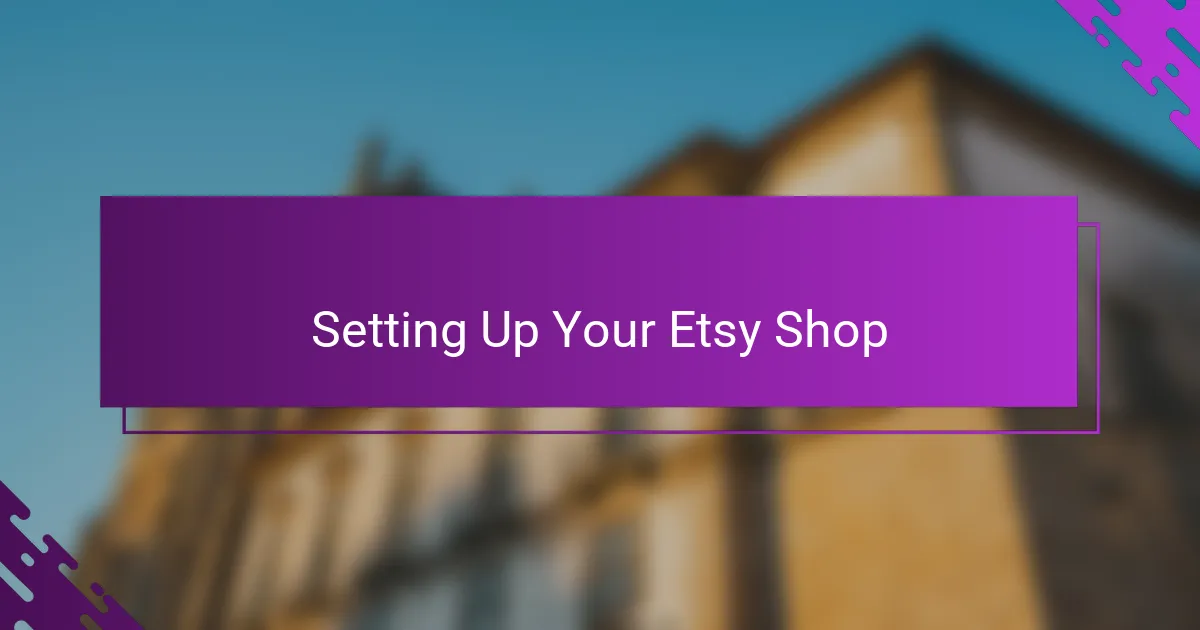
Setting Up Your Etsy Shop
Setting up my Etsy shop felt like opening a little window into my creative world. I remember the moment I uploaded my first digital product—it was both exciting and a bit nerve-wracking. Have you ever experienced that mix of anticipation and pride when sharing something personal with others?
The process itself was surprisingly simple. Etsy guides you step-by-step, from choosing your shop name to crafting your first listing, and I found myself appreciating how intuitive everything was. What surprised me most was how much the shop’s appearance—your banner, logo, and descriptions—can shape a buyer’s first impression.
One thing I learned quickly is that clear, detailed product descriptions are key. I started adding FAQs and usage ideas right in the listing, which helped answer my customers’ questions upfront. It made me realize how much thought goes into setting your shop apart—it’s not just about selling but also about connecting.

Creating and Listing Digital Products
When I began creating digital products for Etsy, I realized that the design process was as much about understanding my audience as it was about my creativity. Crafting printable planners or digital art meant putting myself in the buyer’s shoes—what would make their experience easier or more enjoyable? Have you ever found that little tweak in your design that suddenly made everything click?
Listing these products on Etsy felt like telling a story about each item. I learned to write descriptions that didn’t just list features but highlighted benefits and potential uses. It amazed me how adding a few clear details and good-quality images could transform a simple file into a product that buyers felt excited to download.
One challenge I encountered was organizing files for easy customer access. I started including multiple file formats and clear instructions to ensure no one felt lost after purchase. Have you ever received a digital product and wished it came with a straightforward guide? That’s exactly why I made it part of my listings—to build trust and encourage repeat customers.
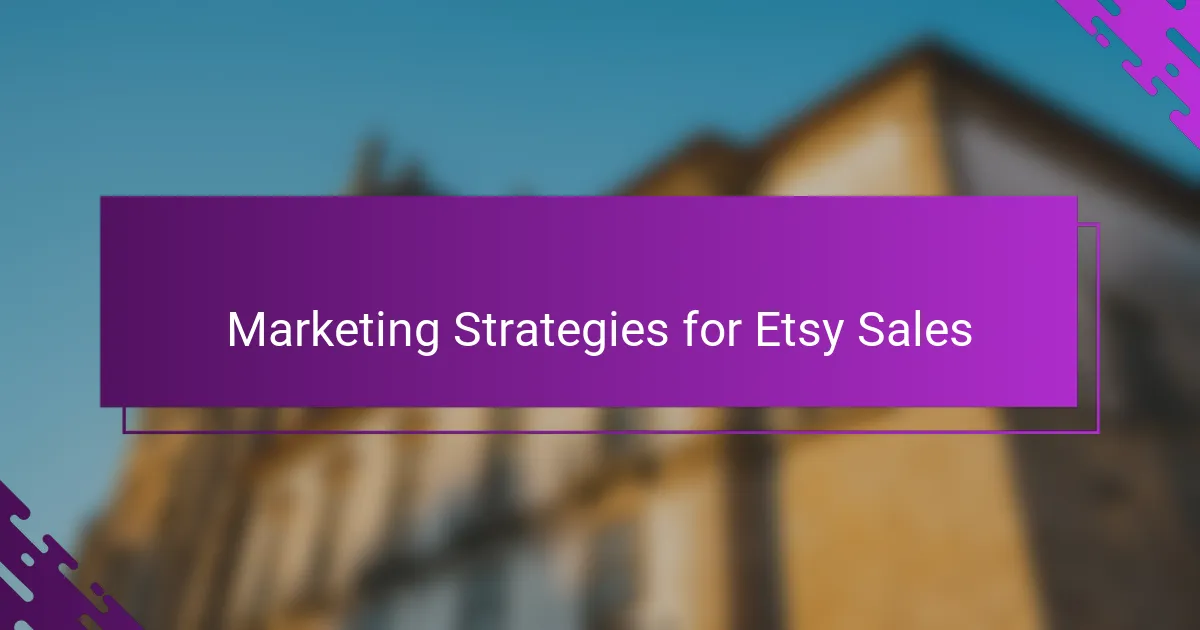
Marketing Strategies for Etsy Sales
Marketing my digital products on Etsy taught me quickly that standing out requires more than just listing an item; it’s about telling a story that resonates. I discovered that using targeted keywords wasn’t just SEO jargon—it actually connected my listings with the right buyers searching for exactly what I offered. Have you ever felt that little thrill when a search term you chose brings a perfect customer straight to your shop?
I also realized the power of social proof early on. Collecting reviews felt like receiving little badges of honor, boosting not only my confidence but also the shop’s credibility. Sharing customer testimonials and behind-the-scenes glimpses on my social media made the connection even more personal—it’s amazing how transparency can turn casual browsers into loyal fans.
One strategy that surprised me in its effectiveness was creating limited-time offers or seasonal bundles. They injected a sense of urgency and excitement that motivated buyers to act quickly. Have you noticed how a well-timed promotion can transform a slow day into a mini celebration of sales? It’s small tactics like these that make marketing on Etsy both an art and a rewarding challenge.
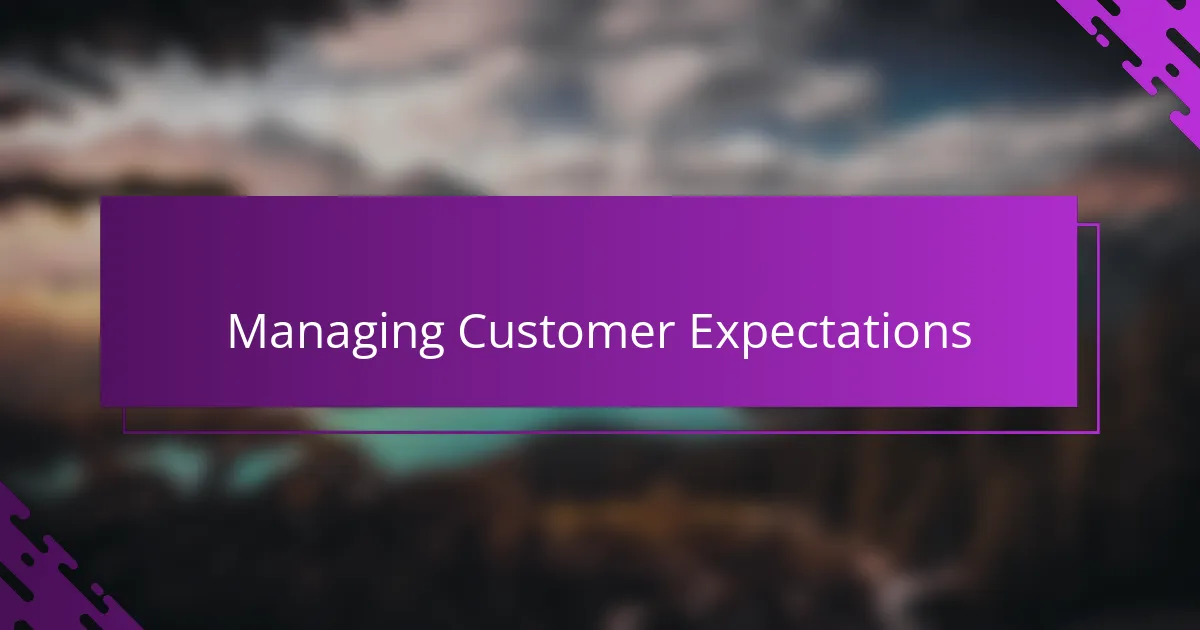
Managing Customer Expectations
Managing customer expectations has been one of the trickier parts of selling digital products on Etsy. I learned early on that clarity in what buyers will receive—and what they won’t—is crucial. Have you ever had that sinking feeling when a customer expects something different from what you deliver? Being upfront in my descriptions helped me avoid that more than once.
I also found that responding quickly and kindly to questions can turn a potential misunderstanding into a positive experience. There was a time when a buyer wasn’t sure how to use a digital planner I sold, and walking them through it personally made all the difference. Moments like that reminded me how much a little empathy builds trust and keeps customers coming back.
One thing I keep reminding myself is not to overpromise. It’s tempting to highlight every possible benefit, but setting realistic expectations avoids disappointment. Do you think it’s better to under-promise and over-deliver? From my experience, a satisfied customer who feels well-informed is far more valuable than one caught off guard.
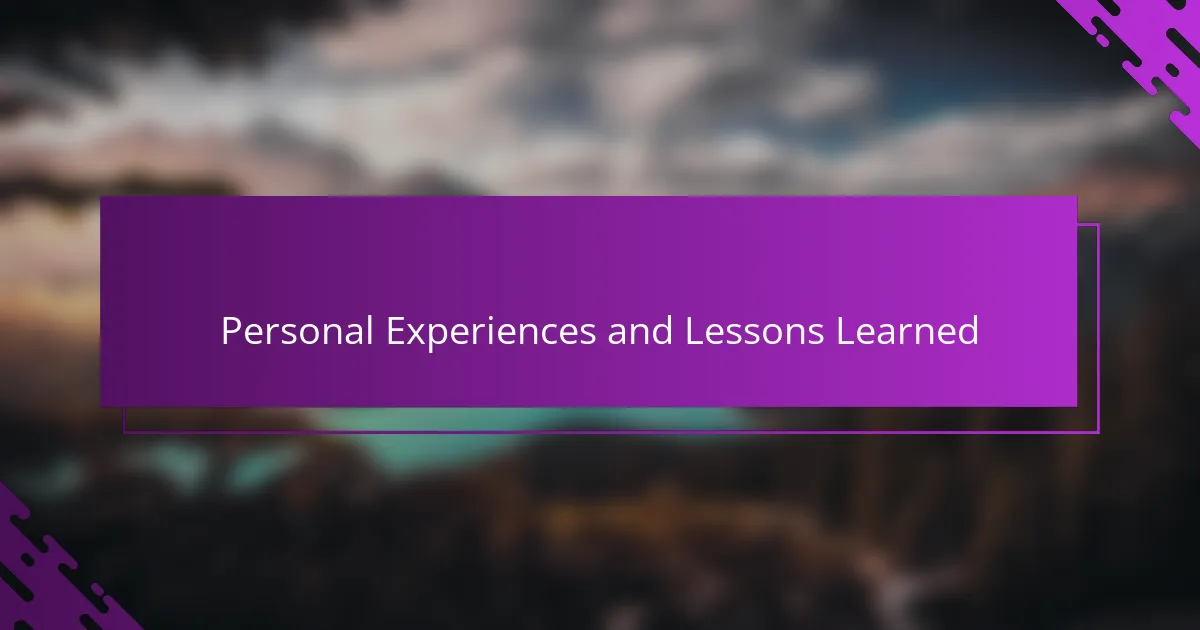
Personal Experiences and Lessons Learned
One of the most eye-opening lessons I learned was how patience plays a huge role. At first, I expected instant sales the moment my listings went live, but reality proved otherwise. Have you ever felt that sting of waiting and wondering if anyone will notice your work? It taught me that building a presence on Etsy is a gradual journey, not an overnight success.
I also found that mistakes are inevitable, but each misstep comes with valuable insight. For example, I once uploaded a file with the wrong resolution, and a frustrated customer let me know. Instead of feeling defeated, I took it as a chance to improve my quality control—now, double-checking every detail is a non-negotiable habit. Don’t you think those little hiccups ultimately make us better creators?
Listening to my customers’ feedback transformed how I approached my products and shop. I realized that being open and adaptable isn’t just good business—it’s a way to build genuine connections. When someone suggested adding more color options or clearer instructions, I jumped on it right away. Have you noticed how responding to your audience can turn casual buyers into enthusiastic supporters? That responsiveness became one of my favorite parts of running the shop.
